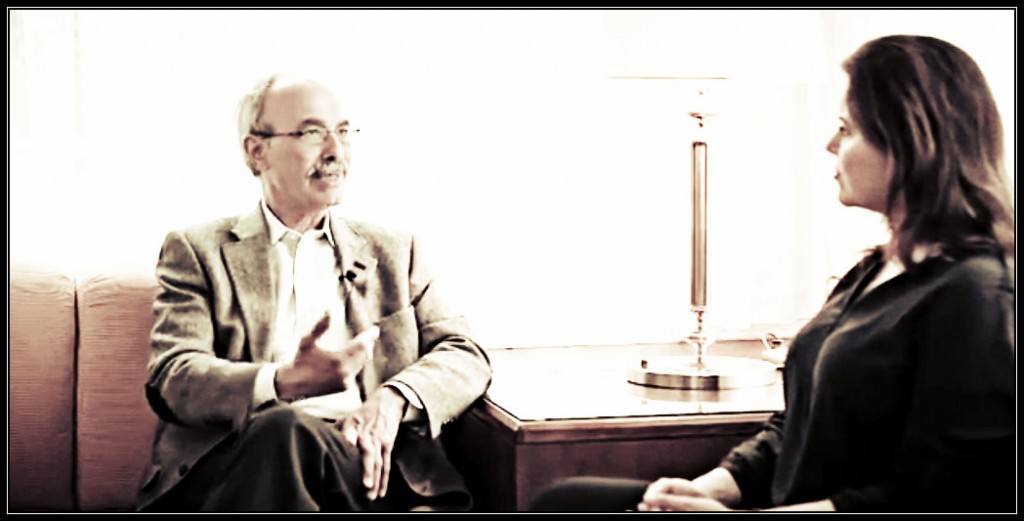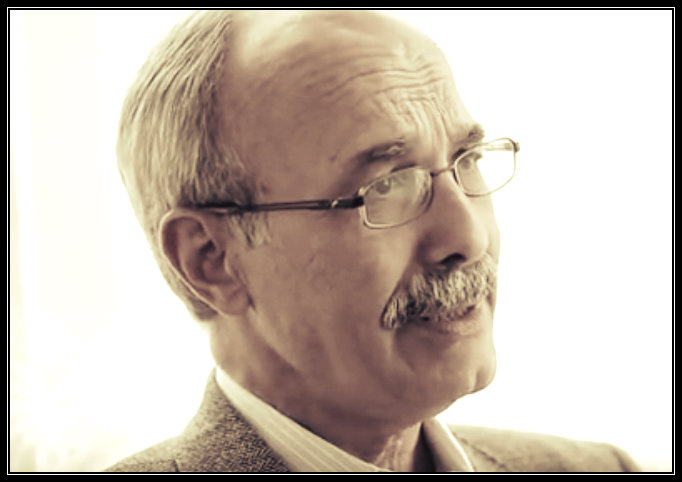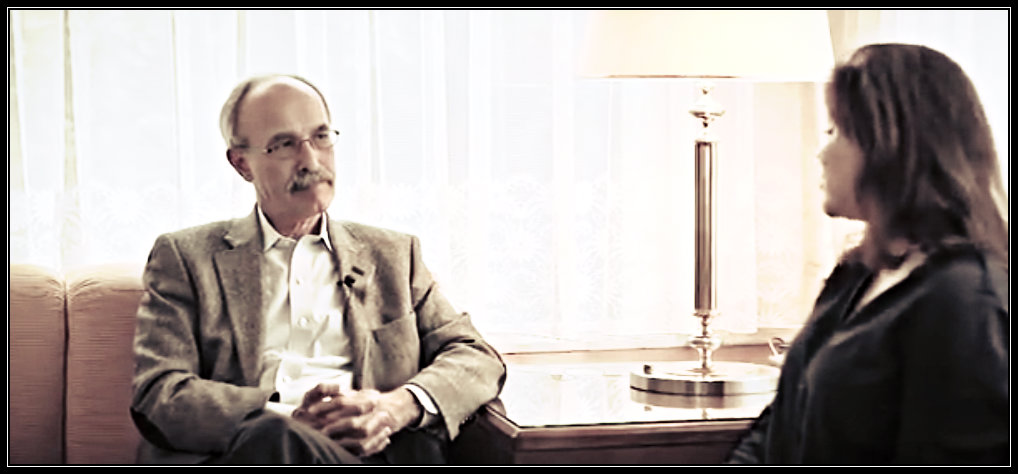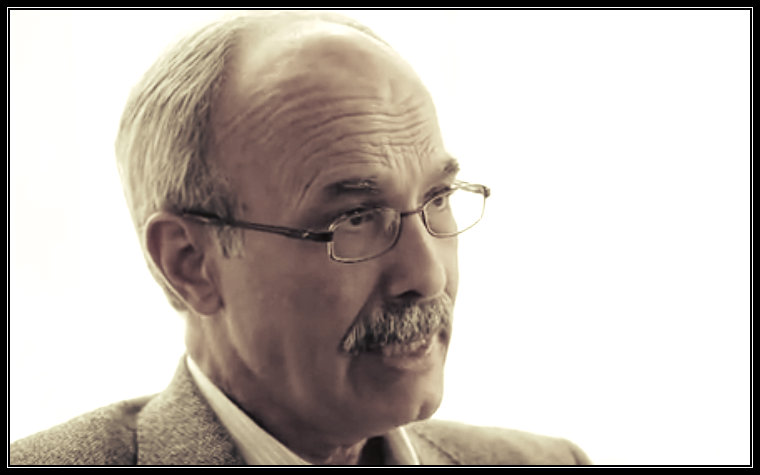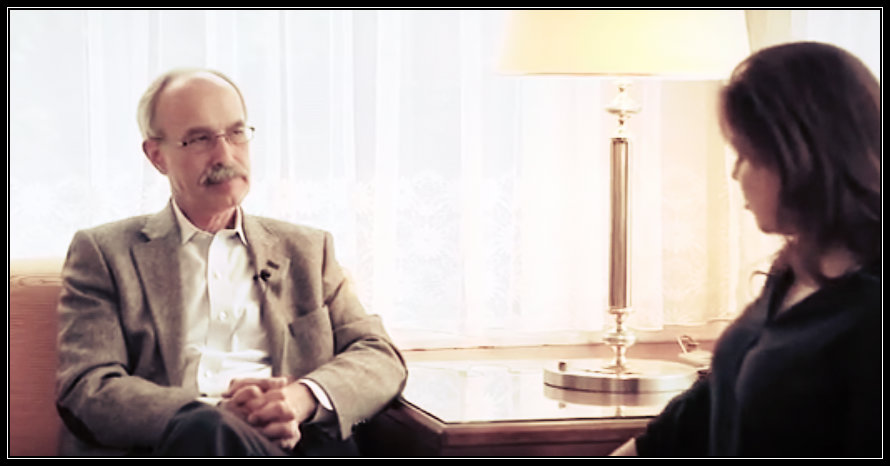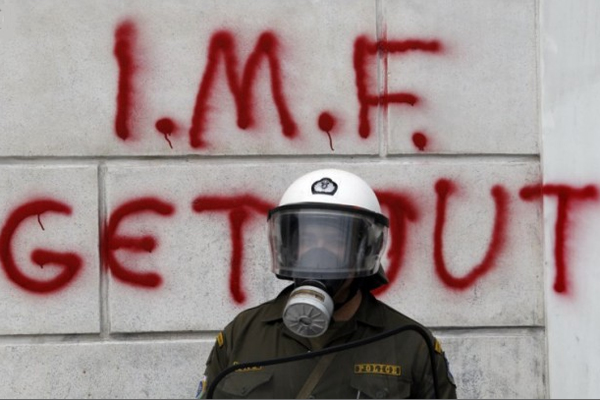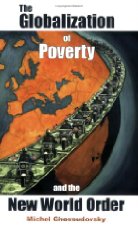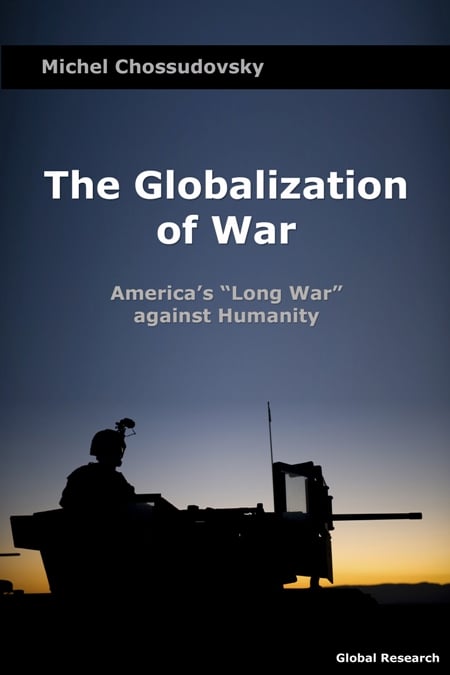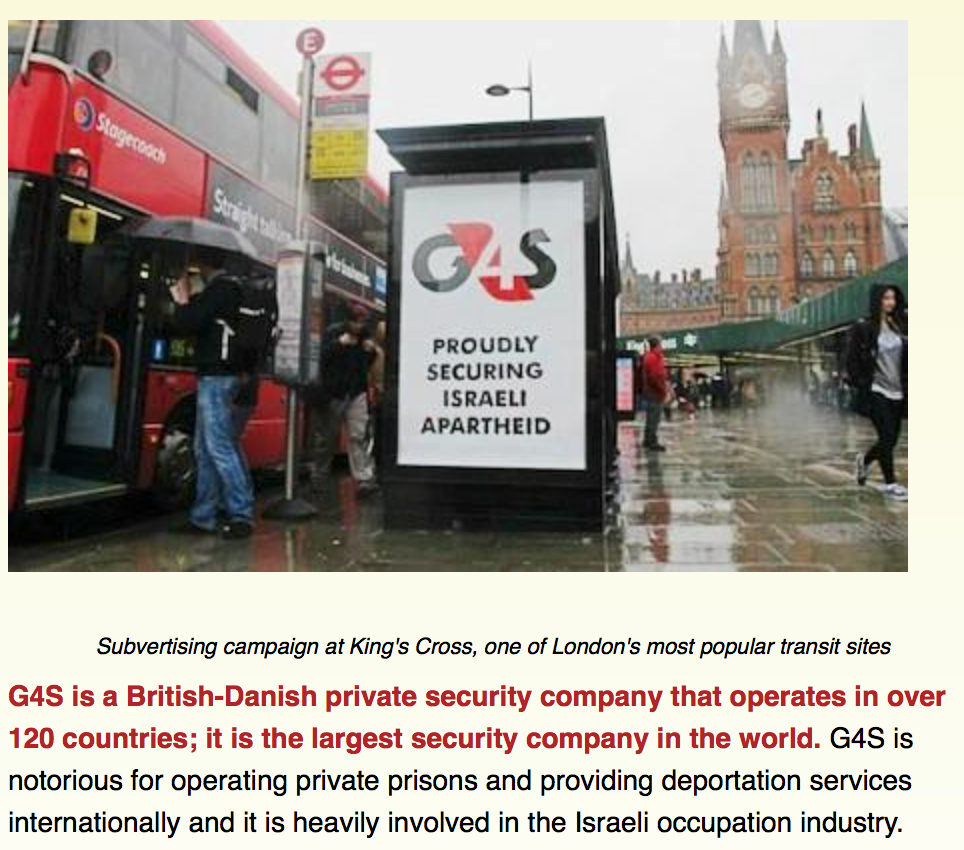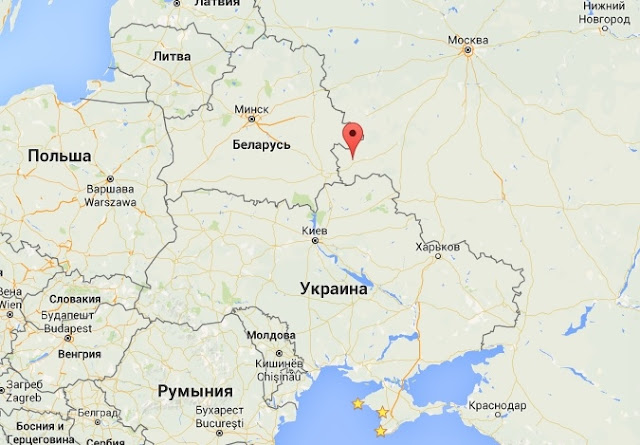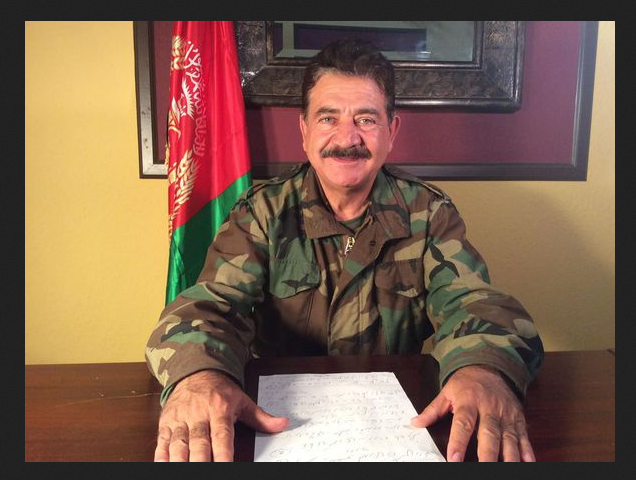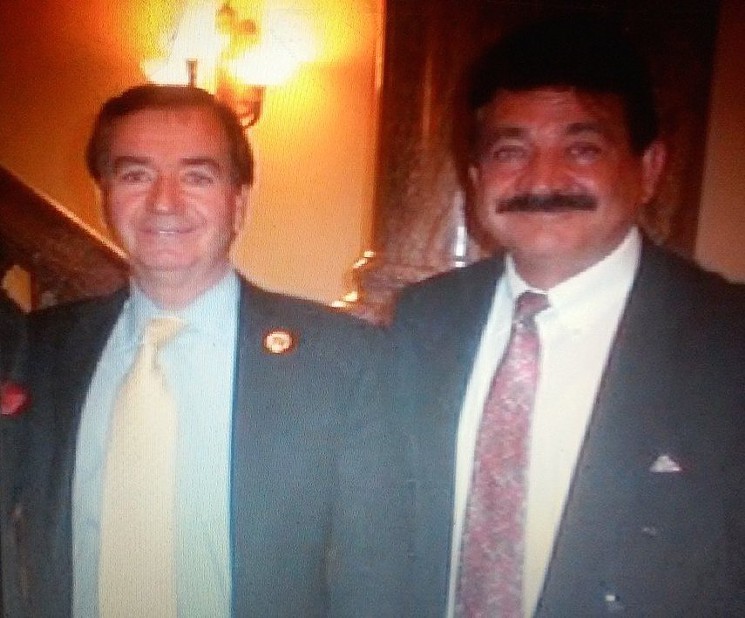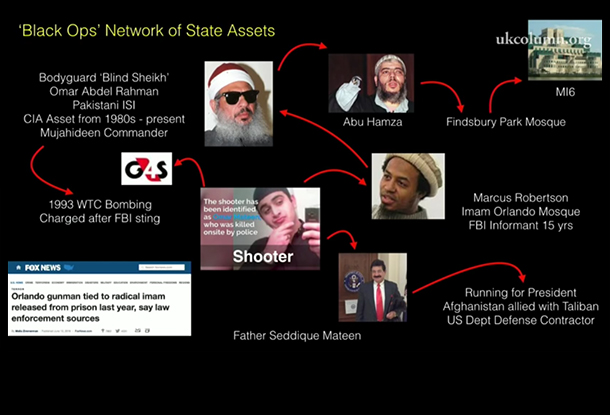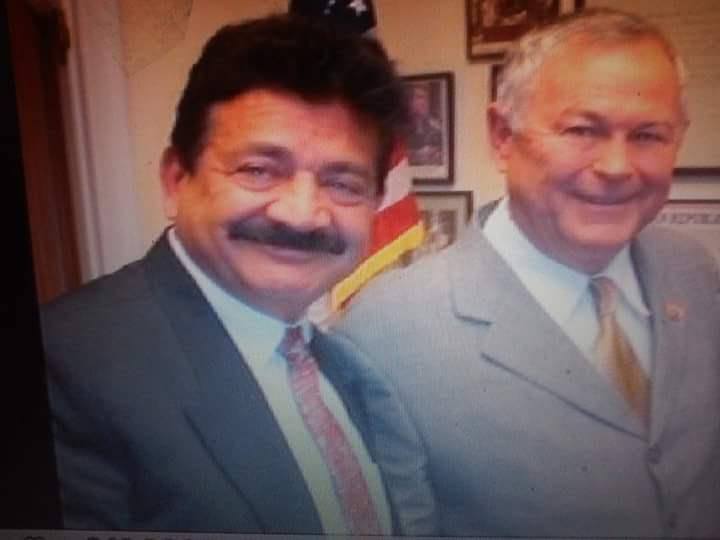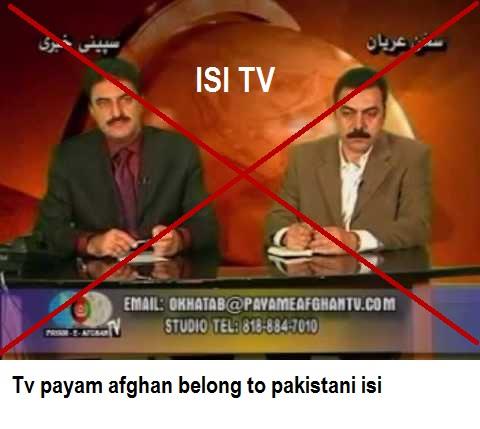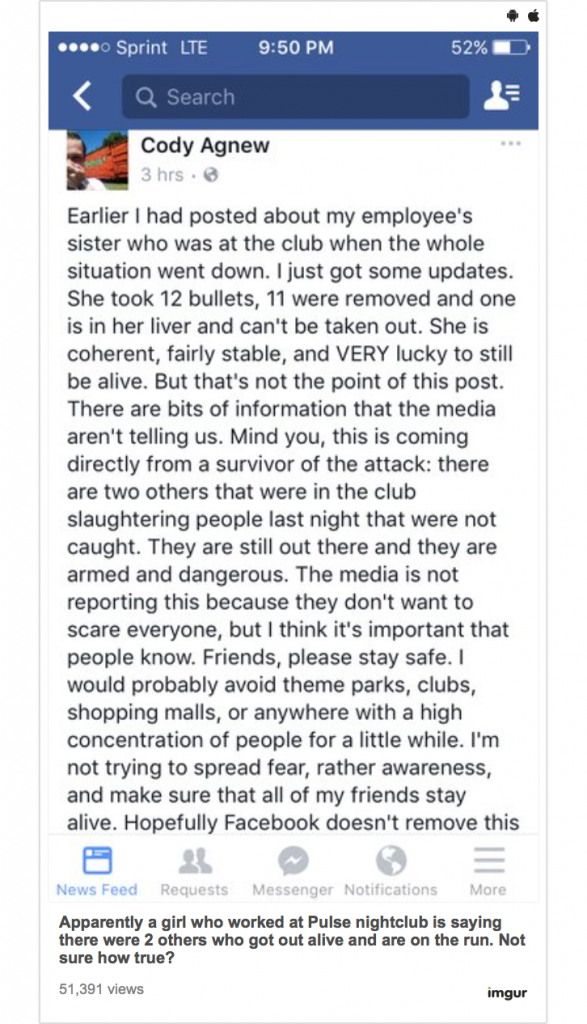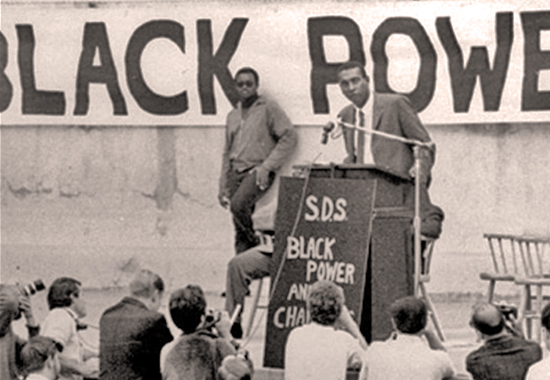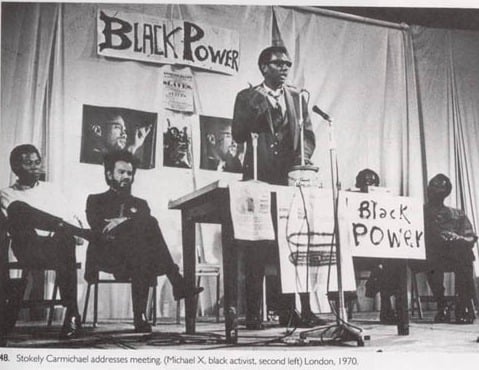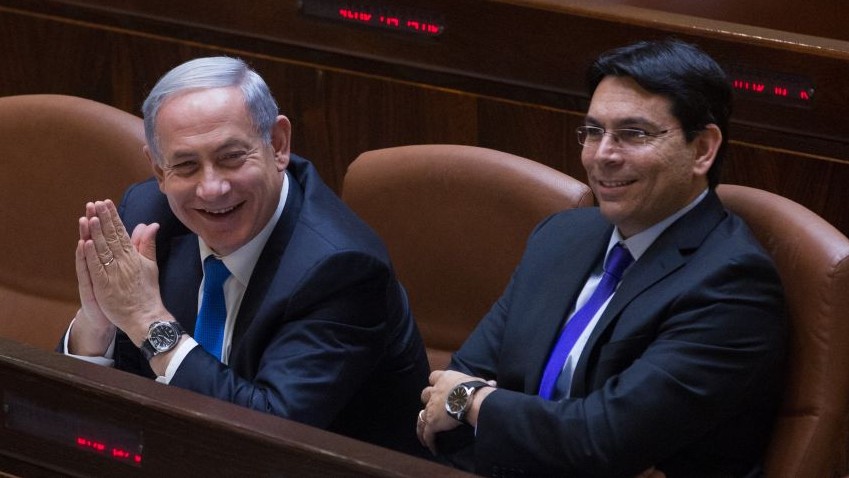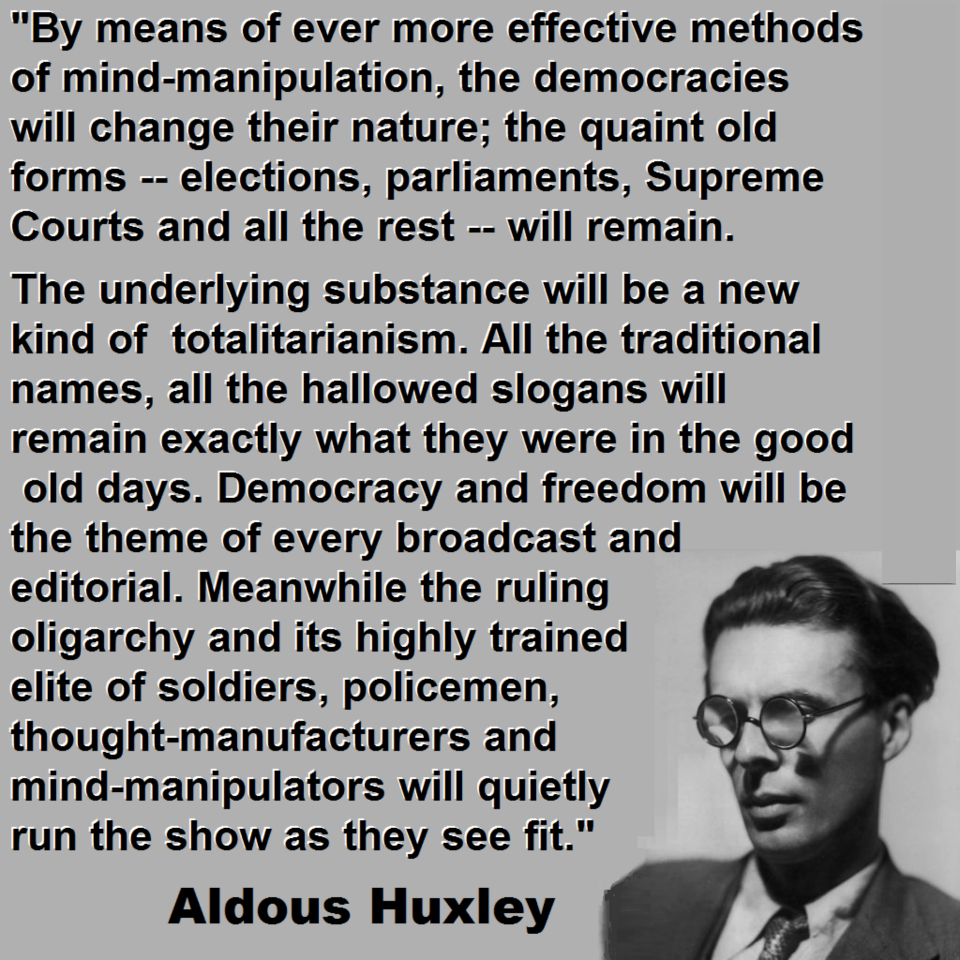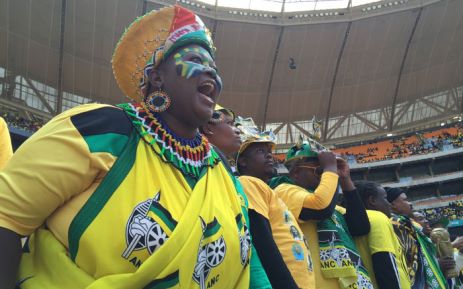Tunisia’s fate at the hands of France in the second half of the 19th century serves as a good example of debt used as an instrument of dominating and alienating a state’s sovereignty. In 1881, France conquered Tunisia and turned it into a protectorate. Until then, Tunisia, known as the Regency of Tunis was a province of the Ottoman Empir |1|, enjoying significant autonomy under a Bey.
Tunisia did not borrow from abroad until 1863
Public debt did not exist until the end of Bey Mustapha’s reign in 1837. Agricultural production ensured the country’s food sovereignty. His successor, Bey Ahmed (ruler from 1837 to 1855) launched a public works programme focusing on the establishment of a standing army, the purchase of military equipment and the construction of lavish residences. He also founded several factories (including the linen factory of Tebourba) on the European model. These accomplishments could not compare with the success of Muhammad Ali, the Egyptian monarch |2| who matched the European powers with his aggression |3|. However, these two courses of action had a common factor: the absence of external borrowing during the first part of the 19th century. The investments were mobilized from the country’s internal resources.
The public works programme turned out to be a fiasco because it did not stimulate the strength and development of the local producers. In 1853, the standing army was dissolved, the construction of the largest palace was discontinued and the factories were abandoned. The Bey of Tunis took to internal borrowing by agreeing to interest rates that were often usurious. This resulted in an inflated debt. The Beylik contracted debts by selling teskérés, or short-term treasury bonds, to rich Tunisians and wealthy foreign residents (Livornese, Genoese, French and so on).

Mohammed es-Sadok
With Muhammad as-Sadiq’s crowning in 1859 |4|, the influence of the European powers, their commercial interests and their businesses, particularly their bankers, went through the roof. The regime saw rampant corruption at the highest levels and the main perpetrator was Mustapha Khaznadar, the Prime Minister, who had been holding important posts since 1837: the Bey’s “treasurer” to begin with (Treasurer = Khaznadar in Turkish). Mustapha Khaznadar retained his apex position in the State till 1873. He levied commissions on each transaction, on each loan, on the income taxes-so much so that he amassed a colossal fortune. Until his dismissal in 1873, Mustapha Khaznadar played a bigger role than the Bey himself in the decisions of the state and the deals with the European financiers and entrepreneurs.

Mustapha Khaznadar
In 1859-1860, Mustapha Khaznadar and Bey Muhammad as-Sadiq made expensive purchases from Belgium, of weapons that were useless in Belgium and then replaced them with costly French rifles. They also constructed luxurious consular residences for France and Britain. The outcome of this was a hike in public expenditure and internal debt. Evidently, such expenditures were not consonant with the population’s interests. The internal public debt shot up by 60% during the first three years of Muhammad as-Sadiq’s reign. Wealthy Tunisians and foreign residents took advantage of an internal debt policy generating lofty profits. The State Executives stood to gain because they diverted a portion of the borrowed money (moreover, they were also party to the debt) while the foreign lenders also made profits. On the other hand, the people had to put up with a mounting burden of taxes.
The first external loan in 1863: a clear-cut swindle
Tunisia’s first overseas loan arrived in 1863. It was a thorough deceit that would lead to the French conquest of Tunisia 18 years later.
At that time, the financial centres of Paris and London were in active competition, the latter being the global forerunner. The Parisian bankers like their counterparts in London, boasted of ample liquidityand were seeking investment opportunities abroad. Loans to Latin America, Asia, the Ottoman Empire, Egypt, Russia and North America were aplenty |5|. The funds were mainly disbursed for the construction of railways (with a speculative bubble taking shape in that sector), the refinancing of outstanding debts – in the case of Latin America – and arms purchases. Yields on the Paris local market were approximately 4-6% while yields on overseas loans were much higher (they could reach 10-11% real yield).
In early 1863, when the Bey announced that he wanted to borrow 25 million francs from abroad, many bankers and brokers in London (including Baron James de Rothschild and various London firms) and Paris (the Crédit mobilier and Emile Erlanger, a banker from Frankfurt based in the French capital) offered their services.

Émile Erlanger
The British and French Consuls in Tunis supported the deals of the London and Paris bankers respectively. In the end, the banker Emile Erlanger bagged the “contract”. A summary of his biography deserves a read |6|. According to the British consul, Emile Erlanger the banker had offered him 500,000 francs in exchange for his support.
What exactly was the 1863 loan?
Along with others, Erlanger got permission from the French government to sell Tunisian bonds at the Paris Stock Exchange. A report in 1872-1873 by Victor Villet, a French Treasury Inspector, described this loan as a real swindle.
According to Erlanger, 78,692 Tunisian bonds were issued at a face value of 500 francs each. They were sold at 480 francs each and entitled the buyer to an annual interest of 35 francs for a period of 15 years. This implied a notional interest rate of 7%, but since the bonds were sold at 480 francs the real interest was 7.3%. For the buyer it meant that by laying out 480 francs he could get 525 francs (15 years x 35 francs) as interest plus 500 francs at the maturity of the bond.
So, the borrower, the Tunisian government, received 415 francs (i.e 480 francs minus 65 francs as the subscription fee and other bank charges) while it had to repay 1025 francs.
In full, the borrower (Tunisia) received about 37.7 million francs (78,692 bonds sold at 480 francs or 37.77 million) and in exchange it had to repay 65.1 million.
Victor Villet, the French Treasury Inspector found in his surveys that Erlanger collected a little over 5 million in commission (approximately 13% of the amount raised). A sum of 2.7 million francs-clearly appropriated by the Prime Minister and Erlanger -must also be deducted from the amount that should have been received.
Therefore, for about 30 million francs receivable, the Tunisian government committed to repay 65.1 million francs.
Speaking of an indisputable scam or fraud, we must mull over the exasperating conduct of Emile Erlanger and the Tunisian Prime Minister. Erlanger said that he had sold just over 38,000 bonds in Paris and 40,000 in Tunis (remember that the number of total bonds issued amounted to 78,692). Apparently the sale on the Paris stock exchange was much lower than Erlanger’s claims. In fact, over 30,000 bonds remained unsold and in Erlanger’s possession. Erlanger would have earned a commission of over 5 million francs had he sold all the bonds. It seems that he had borrowed from other bankers the sum he had committed to transfer to the Tunisian Treasury (around 30 million francs) in four instalments. He probably pledged as collateral the 30,000 shares that he had not managed to sell. The editor of the Moniteur des Fonds Publics put forth a similar argument in an article published on August 19, 1869: “We believe that it would be absolutely truthful to say that holders living in France acquired 5,000 bonds, at the best… Therefore, Mr. Erlanger was left with about 30, 000 bonds. In this situation, he felt embarrassed to face up to his commitments to the Bey. So what did he do? We believe he deposited his unsold bonds with the Comptoir d’escompte (bank) and obtained an advance with which he could remit some money to His Highness”. (Trans: CADTM)
This hypothesis is strengthened by Erlanger’s claims that he redeemed 20, 962 securities in January 1864 and 8,000 more in 1865, on the secondary debt market. However, the redemptions did not boost the price of those securities. It’s not likely. Redemption of 20,000 securities, with 38,000 officially in circulation, should automatically have raised the price. Yet, the price of Tunisian bonds did not increase. This implies that the securities were not in circulation on the market. Erlanger pretended to redeem securities, which, in reality, he had hoarded.
Moreover, and this must be noted, the 30,000 shares paid out interest every year. Since Emile Erlanger possessed them, it was he who cashed in the interests.
The immediate outcome of the 1863 loan
This external borrowing was meant to restructure the domestic debt; equivalent to 30 million French Francs (remember that it rose by 60% between 1859 and 1862 because of the expenditures of Bey Muhammad as-Sadiq who had been increasingly purchasing foreign goods). The outstanding debt was supposed to be liquidated with money borrowed from abroad. In reality, while the old debt was repaid, the authorities issued new teskérés (or treasury bonds) for an equivalent amount. This is what Victor Villet, the French Treasury Inspector, had to say: “While old securities were reimbursed simultaneously in the stock exchange and by the representatives of the Erlanger household in Tunis… a local government broker (Mr. Guttierez) resumed accepting public money, in exchange for new teskérés issued @ 91%. By dint of this farcical repayment, the debt simply … increased by approximately 15 million”. (Trans: CADTM) The revenue from the sale of the new teskérés was largely diverted to the pockets of the Prime Minister, other dignitaries and wealthy European residents.
The same Treasury Inspector also wrote: “The funds from the 1863 loan [which] were paid in cash in Bardo (seat of the Bey and the Prime Minister) … were deposited in a special account, but were not entered in the official government books; the state funds did not have any record of them and there is nothing to prove that they were used for public expenditure.”(Trans: CADTM)
The sum borrowed in 1863 was squandered in less than a year. At the same time, for the first time in Tunisian history the state was indebted to overseas agencies and that too by an immense sum. Annual repayments to foreign countries were unsustainable. The internal debt, which should have been repaid by external borrowing, increased twofold. Hounded by the creditors, the Beylik decided to pass the burden to the people by increasing the mejba (tax per capita) by 100%.
The revolt of 1864: outcome of the decision to increase a given tax by 100% in order to repay the 1863 debt
The tax increase in 1864 caused a general rebellion in the country. The protesters mainly demanded the discontinuation of the increase in the mejba or par capita tax |7|. As soon as the Bey’s officials started visiting the different corners of the country to collect the mejba, now increased to 72 piastres, the revolt broke out. On March 10, 1864 the French vice-consul Jean-Henri Mattei telegraphed from Sfax: “All the tribes have agreed that they will not pay the new tax of 72 piastres. (…) A network of all the tribes will be the first signal that it’s time for the advocates of this tax to leave Tunis.” |8| (Trans: CADTM) A few weeks later, another consular dispatch read: “The insurrection is widespread and is within an hour from Tunis.” |9| (Trans: CADTM) According to various witnesses, the insurgents accused the government, mostly the Prime Minister Mustapha Khaznadar, of selling the country to the French. They cited the 1863 loan granted by Erlanger, the banker from Paris, as proof.
France, Britain, Italy and the Ottoman Empire sent warships to the Tunisian territorial waters to threaten the people and to supply necessary aid to the authorities in case the situation went out of hands. The Bey stepped back amidst protests and announced on April 21, 1864 that the mejba will no longer be twofold |10|. In July 1864, he reprised the concessions to clinch a deal with Ali Ben Ghedhahem, the main rebel leader |11|. Then, with the support of foreign powers, he unleashed repression. The Sultan, monarch of the Ottoman Empire, gave financial support to the Bey so that he could form new troops and take recourse to repression. The Sultan took this initiative to prevent France, Britain and Italy from outflanking him. |12|
A massive repression
Once the revolt was calmed, the Bey launched a massive crackdown to extract the maximum of taxes and fines from the population. The French consul wrote on December 4, 1864 to the Minister of Foreign Affairs in Paris: “The beylical government has refrained from granting clemency, a measure that it seemed keen on introducing …It has reprised severe methods, namely fetters and torture, in order to wrest exorbitant war-time taxes from the coastal provinces”. (Trans: CADTM) A French vice-consul wrote the following to the French consul:“It is my duty to inform you of General Zarrouk’s barbaric methods for executing the bey’s orders: thoroughly bleeding the indigenous people dry and torturing the elderly and the women who had nothing to do with the rebellion”(letter dated February 16, 1865). (Trans: CADTM) Another French official wrote: “Imprisonment, chaining, caning and other draconian methods which were absolutely illegal, given our prevailing public law, were the only ways adopted to extract the fines. Among these stringent measures, I wish to highlight the confiscation of property, torture leading to wounds and death, home invasion … and, finally, the attempted or accomplished rape of women under the very eyes of fathers or husbands in chains“(March 1, 1865). (Trans: CADTM) Jean Ganiage adds:”In March 1865, Espina, the vice-consul, estimated that the government had extorted 23 million piastres from the Sahel from October 1864 to January 1865. In addition, his employees pocketed some 5 million piastres”. |13|(Trans: CADTM)
The second external borrowing was worked out in Paris in 1865
Since the 1863 loan had failed to improve the country’s economic condition, the Bey and his Prime Minister took a headlong rush into a deal with Erlanger for a new loan in March 1865. Tunisia took on a further 36.78 million francs of debt. The conditions he imposed were even worse and more outrageous than in 1863. In fact, while securities worth 500 francs were sold for 480 francs in 1863, the new securities were now sold for 380 francs, i.e at 76% of their face value.
A buyer of a security worth 500 francs paid the discounted price of 380 francs, expecting to earn an annual interest of 35 francs for 15 years (525 francs). On its maturity in 1880, 500 francs were added to the security. An investment of 380 francs fetching 1025 francs, i.e. a profit of 645 francs, was extremely alluring. The notional interest rate was 7% but as the annual interest amounted to 35 francs the actual yield was 9.21% (= 35/380).
The Tunisian State took on a new debt of 36.78 million francs, however, the country received a little less than 20 million francs, since brokerage fees and commissions charged by Erlanger and Morpurgo-Oppenheim, his associates, amounted to 18%. What is more, almost 3 million was diverted directly, half for the bankers, half for the Prime Minister and his associates. The result was threefold:
- The new debt contracted in 1865 amounted to 36.78 million francs.
- The actual amount received was less than 20 million. |14|
- The amount to be repaid over 15 years was 75.4 million.
The bankers had struck gold: without investing anything, they earned approximately 6.5 million francs in the form of commissions, brokerage and outright theft at the time of issuance. All the securities were sold in a matter of days. Paris went euphoric over these securities from Muslim countries (Tunisia, Ottoman Empire, Egypt) and these were termed “turban securities.” The bankers paid newspaper editors to publish cheerful reports. As the Tunisian economy slumped, Semaine financière, a weekly Parisian journal wrote the following about the 1865 loan: “Today, the Bey of Tunis is under the moral protection of France, which takes interest in the Tunisian people’s prosperity, since this prosperity also implies Algeria’s safety”. |15| (Trans: CADTM)
The swindles of bankers such as Erlanger and Morpurgo-Oppenheim did not end there. Not content with embroiling Tunisia in an unfair debt they actively intervened, so that the loan would be used to finance their personal profit. Two examples: they convinced the Bey to buy two useless ships from a certain Audibert, a Marseilles merchant, for the price of new ships (250,000 francs). According to Victor Villet, the French Treasury Inspector, E. Erlanger, who had undertaken to supply 100 rifled barrels of the latest model for 1 million francs, did in fact deliver “ancient guns with their breeches knotted in a kind of sleeve. The con was too crude; in seconds we realised that those guns could not have cost the supplier more than 200,000 francs.” |16| (Trans: CADTM)The list of commercial supplies, reeking of obvious fraud, is long. Moreover, Erlanger persuaded the Bey to grant him a concession for manufacturing Tebourba linen, as security for the loan.
The debts accumulated during the period 1863-1865 led to Tunisia’s transformation into a Protectorate
The new debts accumulated during 1863 – 1865 left Tunisia at the mercy of its external creditors and France. It was simply impossible for Tunisia to successfully repay the due amount. The public treasury received a significant amount (30 million piastres, a sum much higher than an ordinary year’s revenues) in terms of the colossal revenues from tax following the repression of late 1864-early 1865. However, debt payment and extravagant spending against public interest depleted it quickly.
The year 1867 fared dismally in terms of agricultural production. In addition, the Bey exported agricultural goods to generate income. This resulted in a famine in many parts of the country and also a cholera epidemic since the state’s policies fostered a sickly population (devastated by taxes and affected by the rising price of basic food) and public expenditure in health was scanty. We’re speaking of 5,000 deaths in the capital, mainly due to famine, and 20,000 throughout Tunisia. |17|
At the international level, the bankers had suddenly become cautious and they were demanding even higher returns than in the past. In 1866, Mexico had quashed the French expeditionary force and subsequently suspended the debt payment, considered odious, to French bankers and holders of Mexican bonds (especially the ones sold in Paris by Erlanger the banker during 1864 and 1865). Consequently the Bey and his Prime Minister failed to grab new big loans from Paris or elsewhere. Their pipe dream for a loan of 100 million nosedived. Indeed, in February 1867 they signed a new contract with Erlanger the banker. Although Erlanger planned to sell 200,000 Tunisian securities in Paris, he managed to sell only 11, 033 after a few weeks. The enthusiasm for the Tunisian Turban securities had already died down. Consequently, the Bey resorted to “small” loans at usurious rates from other Parisian bankers, such as Alphonse Pinard |18|, director of the Comptoir d’escompte de Paris bank, who sanctioned a loan of 9 million francs in Paris in January 1867. Rothschild was contacted but he refused to lend to Tunisia. Oppenheim and others demanded approximately 15% interest rates.
The Bey partially suspended the servicing of both internal and external debt with effect from 1867. This prompted A. Pinard, the director of Comptoir d’escompte de Paris, to take Tunisia to the civil court of the Seine for contravening the clauses of the January 1867 loan, worth 9,000,000 francs. Pinard demanded ownership of the revenues from Tunisian customs and olive harvest. The court ruled in August 1867 and A. Pinard lost the case: the Regency of Tunis was a foreign territory and not subject to the court’s jurisdiction.
Then Alphonse Pinard and the other bankers adopted another strategy. They formed a union |19| of the holders of Tunisian securities. Bankers such as Bischoffsheim, Bamberger, Levy-Crémieu and Edmond Adam joined. So did Joseph Hollander, director of the Banque des Pays-Bas and Pinard’s future father-in-law. The union took upon itself to ‘help’ the beylical government with interest payment. Later, in 1869-1870, Pinard managed to become a direct member of the International Finance Commission which took control of Tunisian finances and triumphed (see below).
The debts resulting from the loans of 1863-1867 were odious and should have been repudiated
The debt contracted between 1863 and 1867 was clearly odious for the Tunisian people. Alexander Nahum Sack, a law professor at Paris and proponent of the doctrine of odious debt wrote in 1927: “When a despotic regime contracts a debt, not for the needs or in the interests of the state, but rather to strengthen itself, to suppress a popular insurrection, etc, this debt is odious for the people of the entire state. This debt does not bind the nation; it is a debt of the regime, a personal debt contracted by the ruler, and consequently it falls with the demise of the regime.” |20| This debt fits that definition to a T.
Furthermore, he added: “One could also include in this category of debts the loans incurred by members of the government or by persons or groups associated with the government to serve interests manifestly personal — interests that are unrelated to the interests of the State.” This is a perfect description of the conduct of Prime Minister Mustapha Khaznadar and other dignitaries of the beylical regime. |21|
Sack also insisted that the creditors of such debts, once they have loaned with full awareness of the consequences, “have committed a hostile act with regard to the people; they can’t therefore expect that a nation freed from a despotic power assume the “odious” debts, which are personal debts of that power.” The bankers Emile Erlanger, Alphonse Pinard and their associates knew very well that the loans were against people’s interest. Also they were, as we have shown, directly party to the scam.
Regarding Erlanger the banker’s policy of issuing high-risk securities at the financial level and at an odious level concerning legal matters, we must also remember that he simultaneously issued Mexican securities in 1864 and 1865 on behalf of the Mexican puppet government set up by the French army. This government was led by Maximilian I of Austria, who would be executed in June 1867. Erlanger disbursed a loan of $ 15 million to the Southern slave states (the Confederacy) in 1863 in Paris and London. It was pledged on cotton and he immediately stood to gain about $ 4 million |22|.

The dismantling of the Ottoman Empire
France was on the lookout for an opportune moment to take complete control of Tunisia
Ever since they colonised Algeria in the 1830s, the French leaders considered that France had the right to expand its colonial reach to Tunisia. It was only a matter of the right pretext and time. They also had other priorities, both internally and on the levels of Continental Europe, even the world. In the Arab region, Egypt demanded priority for geostrategic reasons: the possibility of direct access to Asia through the newly-opened Suez Canal between the Mediterranean and the Red Sea; access to dark Africa by the Nile; the proximity of the East by land routes; Egypt’s agricultural prospects; competition between Great Britain and France (whichever of these two powers would control Egypt, would also have a strategic advantage over the other). Napoléon realised this and put theory into practice with his Egyptian campaign in 1798.
The conquest of Tunisia was not a priority; particularly because the efforts to stabilize France’s reign over Algeria had cost dearly, given the counter resistance. In France, no one could count on public support for a new colonial venture. In the 1860s, the project for seizing Mexico failed miserably. As mentioned above, Louis-Napoléon Bonaparte had to withdraw his French troops from the Mexican soil in 1866 vis-à-vis the successful counter-offensive from the Mexican progressive forces and he had to deal with the claims of French bankers against Mexican debts (about 60 million). |23| At the end of 1867 Napoleon III was also worried about the advance of Garibaldi’s Republican red shirts who threatened to capture Rome, France’s protégé.
However, transforming Tunisia into a Protectorate, or an outright conquest of the country, was a priority, even an obsession for the French consul in Tunisia, France’s plenipotentiary representative to the Bey. The actions or conducts of various successive consuls bear testimony to this fact. As the rebellion raged in 1864, Charles Beauval, the French Consul, had a double game to play: while France officially supported the Bey, he negotiated with Ali Ben Ghedhahem, the main rebel leader, in case he decided to overthrow the Bey. He wrote on May 30, 1864, “it will be worthy of the Emperor to assemble all the tribes of Tunisia in a small Arab confederation”. (Trans: CADTM) According to the historian John Ganiage, in September 1865 “The Tunisian issues were discussed in a cabinet meeting presided over by the emperor. Marshal MacMahon, Algeria’s governor, proposed to send an expeditionary army to Tunis and had a detailed plan on how to organize and run this troop. However, this plan far exceeded the government’s intentions.” |24| (Trans: CADTM) Two years later, according to J. Ganiage, “For the Botiliau consul, there was no other solution than a direct French occupation of Tunisia; it’s annexation to Algeria or a temporary occupation against collateral.”(Trans: CADTM)
Moreover, the correspondence of the French officials in Tunisia reeked of racism, as evidenced by the Botiliau consul’s letter dated December 2, 1867 in which he denounced “the customs of the Arab people, their incompetence, their deceitfulness, lies, corruption …” |25| (Trans: CADTM)
Formation of the International Finance Commission in 1869
In January 1868, Marquis de Moustier, the French Minister for Foreign Affairs, broadly outlined the proposal to establish an International Commission for taking control of Tunisia’s finances: “I think that our efforts should primarily focus on ensuring a proper management of the revenues pledged by the beylical Government. If we manage to exert a genuine control over the fiscal products – left in the hands of incapable hands or infidels today – we could take a giant leap towards our desired target. If there is an agreement for applying this principle we could entrust the work to a Commission with its headquarters in Tunis.”(Trans: CADTM)
In April, 1868, the Bey planned to issue a decree establishing the International Finance Commission as instructed by the French representatives. 15 months later, when France had received the green signal from Britain and Italy, the Bey issued the decree. The text of the Decree dated July 5, 1869 demonstrated Tunisia’s outright capitulation to its creditors. Article 9 was particularly important because it stipulated very clearly that the Commission would lay claim to all state revenues without exception. It additionally stated that no loan would be granted without its permission. Article 3 specified, even though diplomatically, that the most important figure in this Commission was the representative of France who would be appointed by the French Emperor. In fact, the Bey ratified that. The Commission was the one to ascertain the exact amount of the debt (Art. 5). That the Commission would restructure Tunisia’s debt and decide whether or not to reduce it, was a fundamental issue for the creditor banks. Article 10 was also of paramount importance for the French bankers because it stipulated that two direct representatives would be chosen from them and included in the Commission. Consequently, when the Commission was set up in November 1869, the union of the bondholders led by the Parisian banker Alphonse Pinard had got Erlanger as their representative |26|. British and Italian creditors holding domestic debt securities were also represented.
| Extracts from the Decree of the Bey of Tunisia Establishing The International Finance Commission
In view of the well-being of our kingdom, our subjects and our trade, we see the need to establish a finance commission in compliance with the decree issued on April 4 last year, later ratified by our decree of May 29, the content of which is as follows:
Art. 1. The Commission, with regard to which our decree of 4 April 1868 was issued, will be constituted in our capital within one month.
Art. 2. This Commission will be divided into two separate committees; an Executive Committee and a Control Committee.
Art. 3. The Executive Committee will be formed in the following manner: two officials from our own government appointed by us, and a French Treasury inspector also appointed by us and primarily chosen by the emperor’s government.
Art. 4. The Executive Committee will have the responsibility to oversee the current state of various claims constituting the kingdom’s debt, and the resources available to the government for meeting them.
Art. 5. The Executive Committee will open a register in which all debts, both external and within the kingdom, comprising teskérés or treasury bonds, as well as the securities for the loans of 1863 and 1865, will be recorded. As for the debts that are not controlled by government contracts, the bondholders must report within two months. For that purpose, the executive committee will ensure the publication of a notice in the newspapers of Tunis and abroad.
Art. 6. The Executive Committee will demonstrate its willingness to familiarize itself with all authentic documents of income and expenditure. The Ministry of Finance will provide necessary resources to this effect.
(…)
Art. 8. The Executive Committee will make all arrangements concerning the general debt and we will extend all the necessary support to ensure that the relevant measures are implemented.
Art. 9. The Executive Committee will receive all state revenues without exception; treasury bills or other securities will not be issued without the consent of the said committee further authorized by the control committee; and if the government is obliged, God forbid, to borrow, it can do so only with the prior approval of both committees.
All teskérés that would be issued for the Commission-apportioned amount for government expenditure will be issued on behalf of the Commission and bear the Executive Committee’s stamp. These teskérés will not exceed the figure stipulated in the expense budget.
Art. 10. The Control Committee will be formed in the following manner: two French members for the debts of 1863 and 1865; two English members and two Italians members representing the bondholders for the domestic debt.
|
The articles above were written at the Palace of La Goulette on the 26 of Rabi’ al-awwal, 1286 (July 5, 1869)
The Tunisian debt restructuring in 1870
One of the principal tasks of the Commission, in fact the most urgent, was to restructure the debt. Victor Villet, the inspector of finances designated by France and, as we have seen, the principal person of the Commission, proposed in December 1869 that the sum of Tunisian debt, evaluated at 121 million francs be reduced to less than 56 million francs and rescheduled. |27|
The bankers’ representatives rejected the proposition and gained the support of their respective governments, particularly the government of Louis-Napoleon Bonaparte who was very close to the French high finance sector. Not only was there no reduction of Tunisian debt, the bankers managed to have it increased to 125 million francs. This was a complete victory for the bankers’ representatives nominated to defend the interests of Alphonse Pinard and Emile Erlanger. These bankers held the 1863 and 1863 Tunisian bonds purchased on the open market (bonds they had themselves emitted for the Tunisian treasury) for 135 or 150 francs, speculating that they would lose value. Thanks to the restructuring of 1870 they gained replacement bonds at a value of almost 500 francs. So, the bonds with a face value of 500 francs that they had previously purchased for 150 francs were now exchanged for new bonds at 500 francs. A windfall that produced a new odious debt!
As the historian Nicolas Stoskopf wrote, the idea was to tighten some more the rope that the Bey had put around his own neck. N. Stoskopf wrote the following in his analysis of the enterprises of A. Pinard, director of the bondholders’ union “After 1867, the Tunisian state of bankruptcy allowed the engagement of the next phase. In the difficult negotiations and sly manoeuvring that followed, Pinard cynically continued to make windfall profits despising French savers as much as the condition of the Tunisians, but with the striking efficiency of an unequalled financier, as a result of the Tunisian debt unification of 1870 the five million francs held by the bondholders’ union increased in value to thirteen million francs.” |28| (Trans: CADTM)
The Tunisian authorities acted in complete complicity with this plundering of public resources. The Prime Minister Mustapha Khaznadar, other dignitaries of the regime and not forgetting the class of wealthy Tunisians who also held a very large quantity of Tunisian internal bonds realised enormous profits from this restructuring. As in most other countries, the local dominant classes are in total cahoots with the international creditors because they draw a large part of their own revenues from debt repayments. It was true in the 19th century and it remains true in the 21st century.
The enrichment of the bankers at the expense of the Tunisian people
Alphonse Pinard and Emile Erlanger decided to withdraw from Tunisia, they were largely rewarded and largely satisfied. His Tunisian operation allowed Erlanger to build a financial empire. He took over the Parisian bank Crédit Mobilier and a few years later grabbed Havas, the international press agency. |29| Alphonse Pinard continued his activities in France and elsewhere in the world with his contribution to the creation of Société Générale (today among France’s top three banks) as well as another bank that eventually became BNP Paribas (currently France’s biggest bank).
This extract from Marx’s Capital, published in 1867 well describes the role played by public debt: “The system of public credit, i.e., of national debts, whose origin we discover in Genoa and Venice as early as the Middle Ages, took possession of Europe generally during the manufacturing period.(…) National debts, i.e., the alienation of the state – whether despotic, constitutional or republican – marked with its stamp the capitalistic era(…) The public debt becomes one of the most powerful levers of primitive accumulation. (…)With the national debt arose an international credit system, which often conceals one of the sources of primitive accumulation in this or that people.” |30|
He adds: “At their birth the great banks, decorated with national titles, were only associations of private speculators, who placed themselves by the side of governments, and, thanks to the privileges they received, were in a position to advance money to the State. (…) the national debt has given rise to joint-stock companies, to dealings in negotiable effects of all kinds, and to agiotage, in a word to stock-exchange gambling and the modern bankocracy.” |31|
The failure of the International Finance Commission
In accord with article 9 of the decree that created the International Finance Commission of July 1869, its members control the State’s revenues. Nevertheless, the economic policies imposed by the repayment of the debt caused the economy to stagnate because the State had no productive investment, did not spend on stimulating the economy and burdened the small local producers, rural or urban, with heavy taxes. Consequently, tax revenues were insufficient to repay the 125 million francs of debt.
The Commission members representing the bankers withdrew in 1871, since they were satisfied and had no further advantages to reap from the work of the Commission, which faced failure of its own policies, imposed since 1869. The failure was such that the Prime Minister Mustapha Khaznadar, who had occupied government posts for 36 years, was sacked in 1873 and put under house arrest, his fraud and corruption having caught up with him under pressure from France.
Khérédine, Mustapha Khaznadar’s replacement tried unsuccessfully to introduce some reforms and was in his turn dismissed in 1876, especially as he did not sufficiently favour French business interests. Khérédine also sought a reduction of the interest to be paid on the debt. That was too much.
The Tunisian artisans were in a disastrous situation, since the introduction of free trade agreements they were unable to compete with European goods. The smallholders floundered. The manufacturing industry was nonexistent. The railway network was no more than a few dozen kilometres (Tunis – La Marsa and Tunis – La Goulette). Tunis’ streets were unpaved and the city was without drainage and sanitation.

Beylical artillery
The big powers gave France the go ahead to take possession of Tunisia
At the Berlin Congress in June 1878 both Germany and England advised France that she had a free field to do with Tunisia as she wanted.
Otto von Bismarck’s Germany, that inflicted a stinging defeat on France in the 1870-71 confrontation (Louis Napoléon Bonaparte was taken captive at Sedan, Alsace-Lorraine was annexed and damages obtained), considered that the new French rulers should be awarded some form of consolation (the Second Empire was replaced by the Third Republic in 1870). |32| Germany had no interest in Tunisia and Bismarck felt that France would be less concerned with regaining Alsace Lorraine if it focused on conquering Tunisia. England, that prioritised its presence in the Eastern Mediterranean (Cyprus; Egypt, Syria…) also approved of giving France something to do by grabbing Tunisia. Lord Salisbury, the British representative said to his French counterpart: “Take Tunis if you want, England will not object and will respect your decision. What’s more, you can’t leave Carthage in the hands of barbarians (Trans: CADTM).” |33| The French Minister of the Interior said “Mr. von Bismarck leads us to understand that he will not object if we take Tunisia (Trans: CADTM).” |34| The French government took its time to consider this position but did not take action because of other priorities. Meanwhile, the French consul in Tunis was on the lookout for a slip from the Bey that would justify a French military intervention. |35|
Finally, the action took place in 1881 when a majority favourable to conquest formed in the French government: the pretext being the ’exactions’ by the Kroumir tribe.
The bankers were informed of the French government’s intentions and purchased massive quantities of Tunisian bonds, priced at 330 francs, on the Parisian market in January 1881. On the eve of the military intervention their price had increased to 487 francs (for a nominal value of 500 francs), a price hitherto not attained. The idea was simple: once France had control of Tunisia the debt would be restructured again and all the creditors would be paid. They made no mistake; the debt was restructured in 1884, during the second term of President of the council, Jules Ferry. Public finances were also made to contribute to the satisfaction of the bankers.
The Havas agency, owned by Erlanger since 1879, took part in the public opinion campaign favourable to military intervention.
The 1881 invasion
France was ready to jump, on the first opportunity, to use the agreements made at the Berlin Congress. The difficulty for Jules Ferry was that a military intervention needed the agreement of the Chamber of Deputies.
As already said, the French diplomats sought all the possible means to provoke an incident that would justify a French military intervention. Theodore Roustan, the French Consul was ready to pounce. In May 1880 he wrote to Baron de Courcel, a very influential French diplomat (who would become the French Ambassador to Berlin in 1885 and take part in the 1884-85 conference which ’regulated’ the European colonial takeover of Africa) |36|: “We should wait and prepare our motifs to act before preparing the means. The foolishness of the Tunisian administration will help.” The conflict between the Algerian Ouled Nahd tribe and the Tunisian Kroumir tribe provided the opportunity to launch a large scale operation. At the end of February 1881 a difference between the two tribes provoked an attack by the Ouled Nahd on the Kroumirs with fatal casualties on both sides.
The French Consul was exalted. “We could not hope for a better occasion to act, and to act alone because the other powers are not concerned.” To avenge their dead, 400-500 Kroumir tribesmen attacked the Ouled Nahd twice on March 30-31 in Algerian territory but were repulsed by French troops; six French soldiers died in the fighting. |37|
Jules Ferry obtained funds from parliament to “re-establish order”. The way he requested the funds on April 11, 1881 was absolutely deceitful and hypocritical: “We are going to Tunisia to punish these crimes. At the same time we shall take all the measures necessary to make sure this kind of event does not happen again. The Government of the Republic does not seek conquests; it does not need them (loud applause from the left and the centre); but it has received in heritage, from previous Governments a magnificent Algerian possession that has been glorified by French blood and made fertile by France’s treasures. It will go so far, in the military repression underway , as is necessary to safeguard, in a permanent and serious manner, the security and future of France’s Africa (Trans: CADTM).” |38|
Twenty-four thousand troops were sent to fight the Kroumirs.

The Bardo treaty, creating a French protectorate, was signed on May 12, 1881 then validated at the Chamber of Deputies by an overwhelming majority. Only one member voted against it, the courageous socialist Alfred Talandier. |39| The Bey of Tunis was coerced into accepting for fear of losing his position, knowing that his brother would willingly take over with the help of the French. He ceded to the French Resident-General all his powers in foreign affairs, territorial defence and administrative reform.

The Bardo treaty
Several months later, France, still ruled by Jules Ferry, reinforced its military actions in Indochina in order to expand its colonial presence. During the summer of 1881, Ferry, having found another pretext for colonial manoeuvres, was voted funds by the Chamber of Deputies for a military offensive in Tonkin. |40|
The French army occupied Tunis in October 1881 and the holy city of Kairouan at the end of the same month. |41|
Faced with the people’s resistance, particularly the rebellion of the Tunisian tribes, |42| the French military action reinforced and the expeditionary corps was increased to 50,000. Through the La Marsa convention of 1883 the Bey was shed of his remaining authority and Tunisia came under direct French administration.

Image caption: first page of the Bardo Treaty
It is to be pointed out that the Bardo treaty, as much as the convention of La Marsa contains precise dispositions that imply the use of debt as a tool of submission and spoliation. Article 7 of the Bardo treaty says: “The government of the French Republic and the government of His Highness the Bey of Tunis reserve the right, of a common accord, to fix the bases of a financial organisation of the regency that will be likely to ensure the service of the public debt and to guarantee the rights of the creditors of Tunisia” (Trans: CADTM). Article 2 of the La Marsa convention stipulated “The French Government will guarantee, at a moment and under the conditions that it deems best , loans to His Highness the Bey destined to the conversion or repayment of the consolidated debt, to a sum of 125 million francs, and the floating debt to a maximum of 17,550,000 francs. His Highness the Bey accepts not to take on any further debt in the name of the Regency without authorisation from the French government.” (Trans: CADTM)
Conclusion
We can say without risk of error after having analysed the upsurge of Tunisian debt in the second half of the 19th century, that it was odious and tightened the colonial grip on the country.
Subsequently, it continued to be an important means of the domination and plunder of Tunisia’s natural and human resources, and a cause of its underdevelopment and marginalisation.
On the basis of this observation the Tunisian people would be within their rights to claim damages from France, who should make the banks (i.e. BNP Paribas or Société Générale) and French corporations, who gained from the debt to plunder the Tunisian people, participate in the compensation.
What is more, the lessons that we can learn from this analysis are of great interest in understanding the current situation in Tunisia.
Just like the 1863 and 1867 debts, the debts taken on by the Ben Ali regime between 1987 and 2010 are also largely odious, and the International Financial Institutions (IFIs) and the Northern creditors (France being the first amongst them) know this very well, as show the resolutions passed by the Belgian Senate in July 2011 and the European Parliament in May 2012.
The economic and social policies instigated by the Beylik power in the 19th century to repay the debt are surprisingly similar to the conditions imposed by the IMF since its 1986 restructuring plan. |43|
In 1864, the increase in the ’mejba’ led to large popular revolts. In December 2010, the abandoning of social policies because of the debt burden led to a revolution. Whereas in 1864, France sent its gunboats to quell the revolt, in January 2011 the French Minister of the Interior, Michèle Alliot-Mari, proposed materiel assistance to the Ben Ali regime to maintain order.
Finally, where the international creditors used the situation in the 19th century to impose free trade agreements, the liberalisation of commercial exchanges imposed on Tunisia by the European Union since 1995, concerning agriculture, fisheries, services and public procurement (Deep and Comprehensive Free Trade Agreement – DCFTA) led to the same disastrous effects on the Tunisian society.
The overthrow of Ben Ali in 2011 has not put an end to the debt system. On the contrary, the successive governments, under the pressure of the creditors, continue to push Tunisia further into debt. At the same time the struggle against the debt is getting organised and is intensifying. A project to pass a law that would install an audit of foreign and domestic debt since July 1986 was presented to the assembly of the Representatives of the People in May 2016 by 40 representatives (out of 217).
To get rid of the shackles of domination and underdevelopment, Tunisia has no other choice than to break the chains of the system.

First page of the La Marsa convention
Eric Toussaint is a historian and political scientist who completed his Ph.D. at the universities of Paris VIII and Liège, is the spokesperson of the CADTM International, and sits on the Scientific Council of ATTAC France. He is the author of Bankocracy (2015); The Life and Crimes of an Exemplary Man (2014);Glance in the Rear View Mirror. Neoliberal Ideology From its Origins to the Present, Haymarket books, Chicago, 2012 (see here), etc. See his bibliography:https://en.wikipedia.org/wiki/%C3%89ric_Toussaint He co-authored World debt figures 2015 with Pierre Gottiniaux, Daniel Munevar and Antonio Sanabria (2015); and with Damien Millet Debt, the IMF, and the World Bank: Sixty Questions, Sixty Answers, Monthly Review Books, New York, 2010. Since the 4th April 2015 he is the scientific coordinator of the Greek Truth Commission on Public Debt.
Bibliography :
Corm Georges. 1982. « L’endettement des pays en voie de développement : origine et mécanisme » in Sanchez Arnau, J.-C. coord. 1982. Dette et développement (mécanismes et conséquences de l’endettement du Tiers-monde), Éditions Publisud, Paris. (English version: Debt and Development, Praeger, New York, 1982).
Ganiage, Jean. 1959. Les origines du Protectorat français en Tunisie, Presses Universitaires de France, Paris, 1960 et Maison tunisienne de l’édition, Tunis, 1968, 580 p. (In French)
Luxemburg, Rosa. 1913. L’accumulation du capital, Maspero, Paris, Vol. II, 1969. The Accumulation of Capital. English edition first published in 1951 by Routledge and Kegan Paul.
Mandel, Ernest. 1972. Le troisième âge du capitalisme, La Passion, Paris, 1997, 500 p. (In English: Late Capitalism. London, NLB, 1976)
Marichal, Carlos. 1989. A Century of Debt Crises in Latin America, Princeton University Press, Princeton, 283p.
Marx, Karl. 1867. Le Capital, livre I, Œuvres I, Gallimard, La Pléiade, 1963
The Ministry of Foreign Affairs, France. 1876. Décret d’institution de la caisse de la dette publique d’Égypte… et 6 autres décrets relatifs au Trésor et à la dette, Paris, 1876. 30 pages.http://gallica.bnf.fr/ark :/12148/bp… Retrieved on May 14, 2016 (in French)
The Ministry of Foreign Affairs, France.1898. Arrangement financier avec la Grèce : travaux de la Commission internationale chargée de la préparation du projet, Paris, 1898, 223 pages.http://gallica.bnf.fr/ark :/12148/bp...
P.H.X. [Paul Henri d’Estournelles de Constant]. La politique française en Tunisie : le Protectorat et ses origines (1854-1891). Paris : Plon, 1891. http://gallica.bnf.fr/ark :/12148/bp... Réédité en 2002 : Paul d’Estournelles de Constant, La conquête de la Tunisie. Récit contemporain couronné par l’Académie française, éd. Sfar, Paris, 2002. (in French)
Reinhardt Carmen and Rogoff Kenneth, Cette fois, c’est différent. Huit siècles de folie financière, Paris, Pearson, 2010. (in French). (In English: This Time is Different: A Panoramic View of Eight Centuries of Financial Crises, NBER Working Paper No. 13882 Issued in March 2008.http://www.nber.org/papers/w13882)
Reinhardt Carmen M. and Sbrancia M. Belen. 2015 “The Liquidation of Government Debt.” Economic Policy 30, no. 82 : 291-333
Sack, Alexander Nahum. 1927. Les effets des transformations des États sur leurs dettes publiques et autres obligations financières, Recueil Sirey, Paris. (in French)
Stoskopf, Nicolas. Alphonse Pinard et la révolution bancaire du Second Empire. Histoire, économie et société, 1998, 17ᵉ année, n°2. pp. 299-317 [en ligne]. Available in French on :http://www.persee.fr/doc/hes_0752-5... (Consulté le 21/05/2016).
Toussaint, Éric. 2004. La finance contre les peuples. La bourse ou la vie, CADTM-Bruxelles/CETIM-Genève/Syllepse-Paris, 640 p. (in French)
Toussaint, Éric. 2016.http://cadtm.org/Newly-Independent-…
Toussaint, Éric. 2016. http://cadtm.org/Greece-Continued-d… TOUSSAINT, Éric. 2016,http://cadtm.org/Debt-as-an-instrum… Van Krieken, G.S. 1976. Khayral-Dîn et la Tunisie (1850-1881), Leiden, E.J.Brill. 325 pages.
Wesseling, Henri. 1996. Divide and Rule: the Partition of Africa, 1880-1914. Praeger.1997 (first edition in Dutch, 1991).
Acknowledgements: The author thanks Mokhtar Ben Afsa, Fathi Chamkhi, Nathan Legrand, Gus Massiah and Claude Quémar for their review and suggestions, and Pierre Gottiniaux for the illustrations.
The author accepts full responsibility for any errors that may occur in this work.
Translation : Suchandra De Sarkar and Mike Krolikowski
Notes:
|1| The Ottoman Empire had conquered Tunisia in 1574.
|2| See Georges Corm. L’endettement des pays en voie de développement: origine et mécanisme in Sanchez Arnau, J.-C. coord. 1982. Dette et développement (mécanismes et conséquences de l’endettement du Tiers-monde), Editions Publisud, Paris, p.39. (in French) (English version: Debt and Development, Praeger, New York, 1982).
|3| In 1839-1840, there were two European military interventions against Egypt. The first was led by Britain and France, the other by Britain and Austria. See Eric Toussaint,
|4| Muhammad as-Sadiq ruled from 1859 to 1882. Tunisia was subjected to direct French domination under this Bey’s reign.
|5| The London and Paris bankers had paid £ 3 million to the Southern states during the Civil War (1861-1865).
|6| In 1853 Frederic Emil Erlanger was 19 years old and exceptionally talented. The Greek government of Otto I recruited him as consul general and fiscal agent on the Paris stock exchange. He also negotiated various deals for other royal courts: Queen Maria II of Portugal made him Baron as a way of thanking him and the title was made official by the Duke of Saxe-Meiningen. While he was sailing in Egypt for recovering his health, he met Ferdinand de Lesseps and offered to help him with finding financiers for the Suez Canal.Emile d’Erlanger was born on June 19, 1832 in Frankfurt am Main and he died on May 22, 1911 in Versailles. He was a banker of German origin and was one of the most prominent in the financial centres of Paris and London in the second part of the 19th century. He is considered to have invented high-risk loans for developing countries that spiked on the European markets until the Russian loan scandal erupted. These include the loan on US cotton while the Civil War blazed, or the issuance of securities to the Tunisian Bey.
The two banks he headed-The Erlanger bank in Paris and its London subsidiary-organised the subscription of the “Erlanger Loan’’ in 1865, allowing investors to be reimbursed in cotton made in Southern US during the Civil war provided that the bonds were redeemed within the Southern Confederacy. This gamble paid off by an interest rate of 7% p.a, a rate relatively high for its time. The loan was also negotiable in London. During the Civil War, the southern states had retained their cotton, which escalated prices to a record high of $ 1.89 a pound, yet to be matched two centuries later. In a few months, this increase would be twenty-fold, but the British industries had time to build up stocks. In 1870, five years after the war ended, the US cotton had almost regained its level of production and the country would remain the global leader in cotton production until 1931, just like the scenario since 1803. However, the bondholders were never reimbursed.
At the same time, the Erlanger Bank staged another major operation by means of the famous loans of 1863 and 1865 to the Tunisian government, masterminded by Mustapha Khaznadar, the Bey’s Prime Minister. The unexpected failure of this project contributed to the Tunisian economy’s ruin and expedited the introduction of the French protectorate.
During 1883, the Erlanger Bank also financed the drilling of the Simplon Tunnel in Switzerland. This tunnel was to connect Valais and Val d’Aosta, which was the largest railway tunnel in Europe at that time. The family-run business spread its wings in different countries.
Source [https://en.wikipedia.org/wiki/Fr%C3… and http://global.britannica.com/biogra…
Please note that the biography available on Wikipedia English is less reliable than its French version.
|7| Other measures taken by the Bey were also questioned: the new constitution decreed by the French Consul in 1861, the reform of the judicial system which made it more expensive and generally less accessible to nomadic tribes
|8| Quoted by Jean Ganiage, Les origines du Protectorat français en Tunisie, Presses Universitaires de France, Paris, 1960 p. 193.(in French)
|9| Jean Ganiage, p. 195.
|10| In the end, the mejba, which amounted to 36 piastres before the revolt and was raised to 72 piastres in 1864 for debt servicing, was reduced to 20 piastres in 1865.
|11| Ali Ben Ghedhahem, chief of the Majer tribe of the Kasserine region, was one of the key figures of the revolt of March-April 1864 against the Bey. After negotiating a cessation of hostilities in July 1864 in exchange for important concessions from the Bey, he took up arms again in autumn. He was imprisoned in the Bastille in 1866 and died, probably murdered, in his cell at La Goulette in 1867.
|12| Charles Beauval, the French Consul and the Plenipotentiary of France in Tunisia, was playing a double game: while France officially supported the Bey, he negotiated with Ali Ben Ghedhahem, the main rebel leader, in case he decided to overthrow the Bey. Ali Ben Ghedhahem made public their correspondence in August 1864 and the British Consul denounced it, condemning France’s duplicity. See John Ganiage, p. 212-213 and 222.
|13| Jean Ganiage, p. 248.
|14| The amount actually transferred to the Tunisian Treasury was less. It did not exceed 18 million francs, as Victor Villet, French Treasury Inspector pointed out in a report dated May 19, 1872.
|15| Semaine financière, March 25, 1865.
|16| Jean Ganiage, p. 248.
|17| See http://fathichamkhi.over-blog.com/a... (in French)
|18| For Alphonse Pinard, see http://www.persee.fr/doc/hes_0752-5… (in French).Comptoir national d’escompte de Paris (CNEP), headed by Alphonse Pinard, is one of four banks that merged to launch BNP Paribas. Founded in 1848, it was called the Comptoir d’escompte de Paris (CEP) from 1853 to 1889. In 1889 it was embroiled in one of the biggest financial scams in France’s banking history: the Panama scandal. A. Pinard played a major role in the creation of the Société Générale.
https://en.wikipedia.org/wiki/Compt…
|19| The bankers, bondholders and the press of that period used this term.
|20| https://en.wikipedia.org/wiki/Alexa… Nahum Sack. 1927. Les effets des transformations des États sur leurs dettes publiques et autres obligations financiers (or, The Effects of State Transformations on their Public Debts and Other Financial Obligations), Recueil Sirey, Paris. The entire text can be freely downloaded from the CADTM website : http://cadtm.org/IMG/pdf/Alexander_... For specific examples of the doctrine of odious debt, see https://en.wikipedia.org/wiki/Odiou…, http://cadtm.org/Topicality-of-the-… and http://cadtm.org/Dette-odieuse?lang=fr (in French)
|21| The following would give an idea of the amplitude of the diversions. The wealth of the qa’id Nissim Shemama (Samama), the Bey’s treasurer, who fled Tunis on June 8, 1864 while the revolt blazed in full steam and settled in Paris to lead a luxurious life, was assessed at about 17 million francs after his demise. This was equivalent to 1 & ½ times the revenues of the Tunisian State. See John Ganiage, p. 197. The riches amassed by Mustapha Khaznadar were even more substantial.
|22| http://global.britannica.com/biogra…
|23| See https://www.herodote.net/Guerre_du_… (in French). I shall come back to this issue in an upcoming article dedicated to the Latin American debt. Also see Carlos Marichal, p. 80 onward.
|24| Jean Ganiage, p. 240.
|25| Jean Ganiage, p. 260
|26| Jean Ganiage, p. 313
|27| Jean Ganiage, p. 319-320.
|28| Stoskopf, Nicolas. “Alphonse Pinard et la révolution bancaire du Second Empire (Alphonse Pinard and the banking revolution of in the second French Empire)”. Histoire, économie et société, 1998, 17ᵉ année, n°2. pp. 299-317. Available here, in French: http://www.persee.fr/doc/hes_0752-5... (retrieved on May 22, 2016).
|29| In 1879, Baron Émile d’Erlanger acquired Havas and declared it as a Public Limited Company (PLC) with a capital of 8.5 million francs. See: https://en.wikipedia.org/wiki/Havas
|30| Karl Marx, 1867, Capital, volume I, Chapter 31. https://www.marxists.org/archive/ma…
|31| Idem.
|32| https://en.wikipedia.org/wiki/Frenc…
|33| Letter from the French Minister Waddington to his Ambassador in London, Georges d’Harcourt, on July 21, 1878.
|34| Hanotaux, Histoire de la France contemporaine (1871-1900), IV, pp. 388-89.(in French) English translation available here https://archive.org/details/contemp…
|35| See: Jean Ganiage, p. 436-437
|36| See: https://en.wikipedia.org/wiki/Geoff…
|37| See: Ministère de la Guerre, L’expédition militaire en Tunisie. 1881-1882, éditeur militaire Henri-Charles Lavauzelle, Paris, 1898, p. 10 and following (in French). http://gallica.bnf.fr/ark :/12148/bp...
|38| Journal officiel (French), April 12, 1881, P. 850.
|39| See his interesting biography (in French): http://www2.assemblee-nationale.fr/...
This Deputé also opposed the military intervention in Tonkin some months later.
|40| See https://en.wikipedia.org/wiki/Tonki… and https://en.wikipedia.org/wiki/Histo…
|41| Several speeches of Jules Ferry, delivered from November 1881 onward, and the report of the parliamentary debate on the intervention in Tunisia can be found here in French : https://archive.org/stream/discours...
|42| To have an idea of the Tunisian resistance, see the part dedicated to the French military intervention here :https://en.wikipedia.org/wiki/Frenc…
|43| See the Tunisian government’s Letter of Intent sent to the IMF on May 2, 2016 :https://www.imf.org/External/NP/LOI…

















